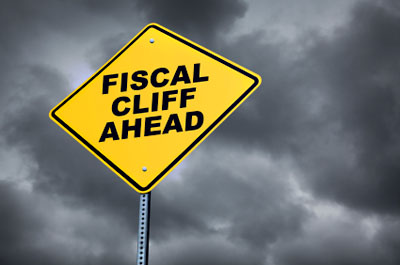 The “fiscal cliff” metaphor refers to the downward swing in the U.S. economy that was expected to follow if Draconian tax increases and spending cuts took effect in 2013. The tax increases and spending cuts were a result of a debt ceiling agreement reached in 2011 between President Obama and Congress. The agreement followed a prolonged political battle that drove down the nation’s credit rating. The term was commonly used among those in the media and economists when discussing this fiscal matter.
The “fiscal cliff” metaphor refers to the downward swing in the U.S. economy that was expected to follow if Draconian tax increases and spending cuts took effect in 2013. The tax increases and spending cuts were a result of a debt ceiling agreement reached in 2011 between President Obama and Congress. The agreement followed a prolonged political battle that drove down the nation’s credit rating. The term was commonly used among those in the media and economists when discussing this fiscal matter.
If the President and Congress had failed to act by the start of 2013, it was estimated that $500 billion of spending cuts and tax increases would have been enacted into law. The Congressional Budge Office (CBO) and other advisory groups predicted that the severe cuts and tax hikes would spur another recession in the U.S. during 2013. The dramatic downturn would have hurt millions of Americans.
However, by January 2, 2013, President Obama and Congress had come to an agreement and he signed the American Taxpayer Relief Act of 2012 into law, averting the ramifications of going over the fiscal cliff.
The new deal focuses on tax revenue and changes to the tax code in order to reduce the nation’s deficit. More specifically, the new law is comprised of an extension of many expired provisions as well as the implementation of attempts at fiscal reforms.
At the heart of the bill is the permanent extension of the Bush-era tax cuts for the middle class, which were scheduled to expire on December 31, 2012. This extension means that the tax-cuts will stay the same for families earning an income below $450,000 and for individuals earning an income less than $400,000. However, while tax rates have been maintained for these individuals and families, tax rates for households earning more than $450,000 have risen.
The American Taxpayer Relief Act of 2012 also extends emergency unemployment benefits and the earned income tax credit. The child tax credit has also been extended for an additional five years.
Need a Reprint?
Leave a Reply